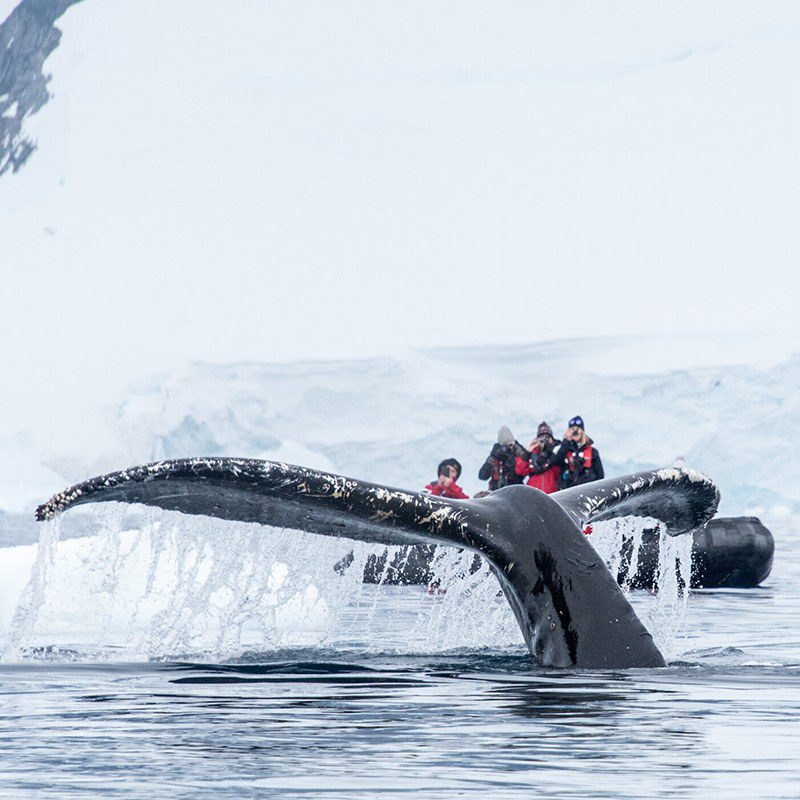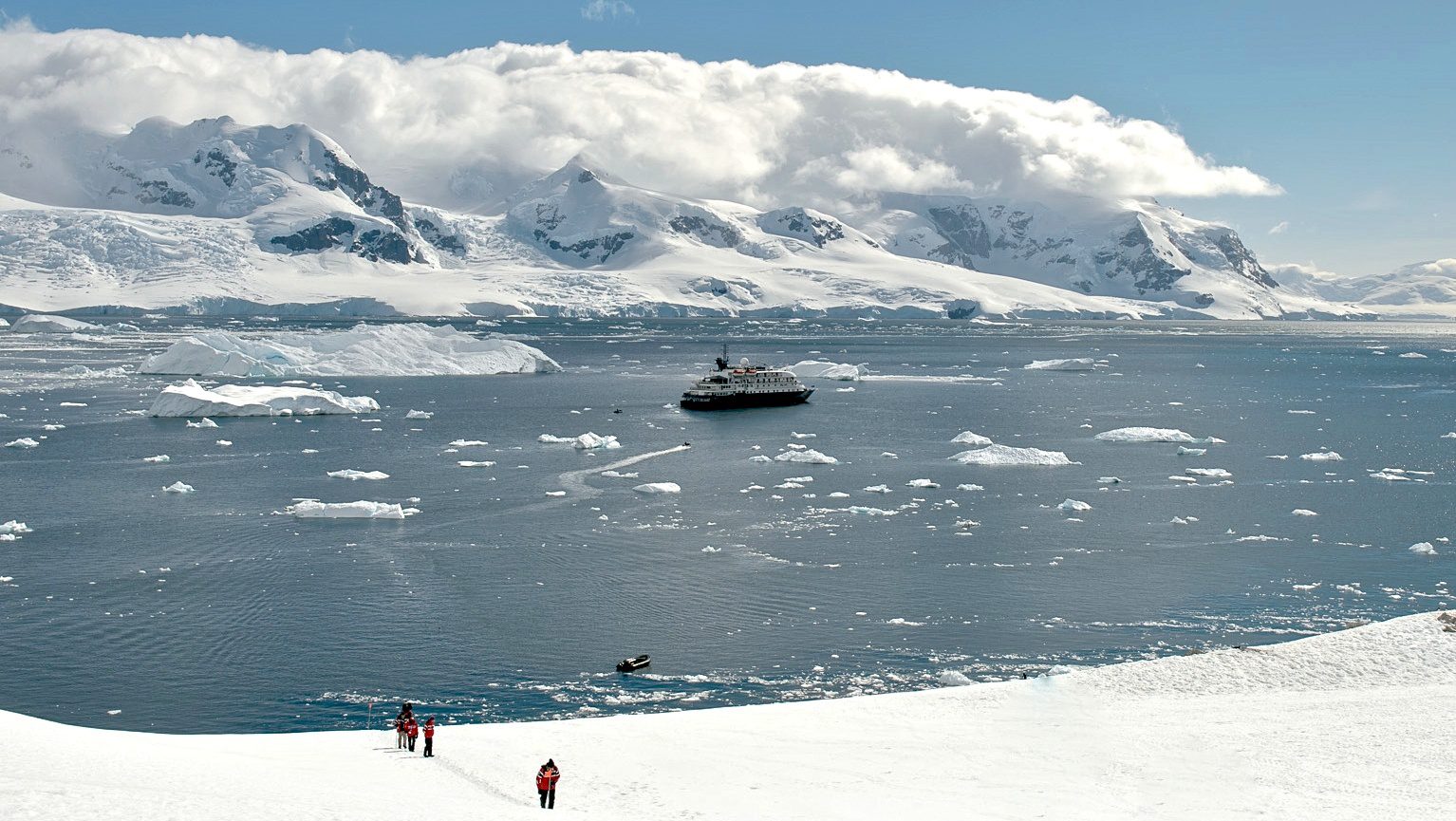8 Reasons to Travel to Antarctica in February
From February to March our itineraries reach a point in which our time in Antarctica is nearing its end- but that doesn’t mean you’ll miss out on any of the glory that the White Continent has to offer. This time of year, the Southern Hemisphere offers plenty of exceptional opportunities and encounters – many of them unique to this period in the season.

1. Warm Weather
This is the ‘warmest’ time of the season to visit Antarctica, which provides some really fantastic perks. As the sea ice recedes, our ship and Zodiacs are able access further South on the Peninsula. This means reaching areas that are equally as pristine as further north in the early season. In February, Zodiac cruises can stay out a little longer and are agreeably more comfortable during this time.
2. Whale Sightings
As the end of austral summer begins, many species of whales come to the area to feed. This is the undisputed best time to see whales. Humpback, Orca and Minke whale sightings are at their peak late season, as they load up on a variety of food sources before migrating to warmer climes. This feeding phenomenon is affectionately known as ‘whale soup’. Whale scientists are often conducting important research in February and March, and our Citizen Science program participates whenever possible.
3. Penguin Entertainment
Penguin rookeries double in size at this time, and adorable penguin chicks are bravely exploring beyond their nests, showing great curiosity towards visitors. Chicks will chase their parents, demanding food and testing the waters for the first time. Our favorite flightless birds are getting in some last meals and preparing to migrate north. If you’re up for a good laugh, a moulting penguin with a hilarious ‘hairstyle’ provides plenty of entertainment.

4. Seal of Approval
At this time of year the beaches are lined with seals big and small. Adorable seal pups are heavily present on the shorelines and are wonderful to watch as they feed, play, and move about.
5. Unique Ice
As the temperature begins to drop in February, passengers can be treated to distinctively patterned sea ice. The night brings frosts that create new formations of ice, and snow algae begins to bloom, turning ice cliffs shades of green and pink. With the ice melt having reached its climax, our ships can go the distance and explore unique bays and channels that are otherwise unreachable.
6. Photo Ops
As the austral winter approaches, the sun sits lower in the sky, providing incredible sunrises, sunsets and wonderful light conditions for guests that are photography buffs.

7. Quiet Waterways
As the season winds down there are fewer ships in the vicinity, which provides more flexibility within our program. Guests on later-season voyages are thrilled to visit any number of preferred landing sites. You might just feel like we have the place to ourselves!
8. Southern Lights
One of the most wonderful displays this time of year is the rare occasion to view the Aurora Australis (Southern Lights). This spectacular light show occurs in the skies above Antarctica from March through September, but with voyages ending in March, this is the only chance we might have to see this brilliant spectacle. This time of year also provides significantly better sunrises and sunsets, as well as unique lighting for photos.
When to Travel
While all of our voyages have an abundance of wildlife, ice, and adventure, February and March voyages offer their own inimitable opportunities. Have further questions about when is the best time to travel for you? Reach out to our team or use our handy Booking Guide.
